Description
Newest Driver: HoloAudio Drivers – Win/10/11 – v5.57.0_2023-02-22 (driver for both Gen2.0 and Gen2.1USB + DFU 5.57 tool and firmwares for Gen2.0)
OLDER DRIVERS: HoloAudio Drivers – Win7/8/8.1/10 – v.5.00 +all firmwares for all products -CLICK HERE
note: May DAC and late 2020 Spring2’s do NOT need firmware update in most cases. They come shipped with 30.14 firmware, however if you need to use DSD1024 and PCM 1.536mhz than you would need to install 30.12 firmware which is less compatible with some devices but does support high res content with Intel Gen7,Gen8,Gen9, Gen10 type Intel boards and most AMD comparable motherboards. And some dedicated cards with Altera Chipsets.
these firmwares are also for other models – Cyan DSD or PCM, and Spring V1 or Spring V2. Please read instructions included carefully and entirely.
NOTES for new 5.00 Driver (this is a major release with firmware update for each model, Spring2 (two versions), Spring1, Cyan.
* New usb driver, 5.00
* Spring2 new usb firmware 30.12 (significant improvement of USB performance, and recommended for those using Motherboard USB (intel/amd) this is only firmware that supports DSD1024 and PCM1.536Mhz (all dacs ship with 30.14 for compatibility reasons) but you can use this if you have a modern PC with Intel/Altera USB chipsets. It works with most Gen7, Gen8, Gen9 and Gen10 Intel boards and comparable AMD boards.
* Spring2 new usb firmware 30.14(only support up to pcm768k and dsd512 but is DEFAULT firmware since late 2020). This firmware can be worked with those ‘hifi’ PCIE usb cards (JCAT PCIE Femto (renasas chipset), Linear Technologies PCIE Femto card, Matrix Element/ElementH USB card (texas Instruments). it’s most compatible with most usb cards and usb controllers. Also compatible with some special USB fiber optic cables.
* Spring Version 1 – new usb firmware 21.16. This fixes the problem roon has mentioned before, which has problem while switching between 24bit and 16bit at same sample rate.
* Cyan PCM or DSD – new usb firmware 21.06. This fixes the problem roon has mentioned before, which has problem while switching between 24bit and 16bit at same sample rate.
All new firmware must have installed the new 4.67 USB driver first. and then copy the directory of the firmware contents into the driver folder… commonly found in programfiles/holoaudio/USB Audio Device Driver/W10_x64/
then run the file “holousbaudioDfu.exe”
BE SURE you copied the appropriate firmware for your dac.
V1 and V2 spring are very different.
take note dacs from late 2020 were shipped with version 30.14 are for those with either JCAT Femto PCI-E card (renasas chipset) or the Matrix Element or Element H card (texas instruments chipset)
these are LIMITED TO DSD512 and PCM768 at this time.HIGH content resolution firmware – version 30.12 is for motherboard USB chipset which is commonly Intel base USB controller and should support DSD1024 and PCM1.536Mhz as stated above in overview.
Spring V1 firmware is only one choice and has no issue with Jcat or Matrix USB cards, so no worries here. both Spring V1 and Cyan have known issue with Roon where changing from 24bit and 16bit sample rate can cause a problem. this is now fixed and addressed in the new firmware update.
ALL these new firmware updates improve USB transfer eye pattern in a significant way! there is a significant reduction in emi noise during USB transfer, and this means theoretically improving sound quality. Measurements confirm whether one can hear the difference or not.
(KTE Spring Dac aka REAL/ORIGINAL Level 3 Spring Dac) (the KTE edition is exclusive to KitsuneHiFi and sold only directly through this website.)
build spec is as follows:
All OCC copper wire replaced with 1.5mm pure silver wire, all plugs on the board are removed as we feel they were acting as a bottleneck. 1.5mm Silver wire is soldered direct to the pcbs with highest grade audio solder.
The blue film cap at the iec inlet replaced with a Mundorf silver/oil capacitor.
Audio Horizon Platinum Reference fuse. (125usd value)
note: The silver transformer takes around 6 hours due to it being made/wound by hand, it is NOT machine wound. And is pure 99.99% silver for its primary and secondaries.
The KitsuneTuned Edition dac requires a significant amount of labor to produce and we are trying to keep the costs down as low as possible and within reach to most passionate audio lovers. Our markup on the components for KTE dac are very low. We build these Dacs due to our prime motivation being passion for audio.
Thank you for your support and understanding!
– Kitsune HiFi
“NOTE: Be sure to say in notes what volt ac model you need, USA is 110 volt ac standard etc. FREE SHIPPING FOR USA CUSTOMERS – all other places are direct ship from china and will charge approximately 90-130usd depending on your country. Also note if you ask for special voltage transformer that it can delay your order up to a week longer.”
This is the “Level3” Kitsune Tuned Spring DAC Above
[metaslider id=568]
This is the “Level2” Rise Ji Edition Spring DAC Above
“NOTE: Please email us and we can take care of your questions. This DAC is in very high demand and quite hard to find in the USA. HoloAudio and KitsuneHiFi are working together to provide you these products although after importation costs they are only slightly higher pricing than what is found if purchasing direct from China. Please take note that ONLY 220V is available when purchased direct from HoloAudio in China or other sources. HoloAudioUSA/KitsuneHiFi has exclusive rights to sell the 110V/220V switchable model. We also can custom make other Transformers like 220, 230, 240v etc”
Kitsune HiFi carefully chooses products that we want to offer to our customers and be unique and/or stand out from all these audio supply stores. Jeff Zhu is a very talented engineer and is the brains behind HOLO Audio. Some say he is the man behind the curtain and he has certainly impressed us with his knowledge and his newest line of products that surely will leave you impressed too! The Spring DAC is his newest product and is capable of DSD native on an Discrete Resister Ladder DAC! This spring is capable of DSD512 native and actually running on his bespoke discrete ladder DAC! This unique DAC is not your run of the mill DAC, it’s full of unique and well thought out designs and implementations. Patented R2R technology. This is the first discrete DAC that has linear compensation and this allows for ultimate music reproduction accuracy. Dual R2R network with advanced architecture for PCM, and Dual Resistor Ladder network with optimized architecture for DSD! We will be offering the first Spring DAC’s in the USA and the Level 3/Kitsune Tuned edition is Exclusive to us.
You may be asking… well what is so special about this DAC? The first Discrete R2R DAC with linear compensation…what is this?
There’s an additional R2R ladder in the Spring DAC, it compensates the main R2R ladder. It works like trimming, but trimming is to change the resistor value. This additional R2R ladder is digitally controlled and will accurately compensate the resistor tolerance. For example, the MSB of 16 bits should have the value of 32768, but due to tolerance, it represents 32700 in real world results. Then that additional R2R ladder will compensate 68 into it. Thus it now becomes 32700 + 68 = 32768. What this means is that it’s likely the most precise Discrete DAC on the market with near flawless linearity, lowest THD and highest SNR of any NOS DAC. The sound is simply something you must experience to fully realize how special this DAC is. It’s a patented technology exclusive to Holo Audio. Kitsune Hifi is also Holo Audio USA and proud to bring you this DAC.
Product Description:
This new DAC “Spring” is the first design of a new era, is a milestone for Holo Audio’s own Jeff Zhu. It’s a full discrete R2R type of audio decoder and does not have off the shelf-DAC chip! This is a bespoke custom-designed core DAC module and truly a breakthrough with technology for any DAC chip today. The Spring is here to achieve new heights, new dynamics and simply a full spectrum of audio to please the aural senses.
Here at Kitsune, we have three versions of the Spring DAC. Other places ONLY offer two models. Below are the three models:
Holo Spring base model – LEVEL 1
(The base model is quite good all by itself and priced so competitively it’s impossible to beat the performance/price ratio.)
Holo Spring “Rise Ji Edition” – LEVEL 2
(With four Jensen 4700 microfarad / 63 Volts added for ultimate power filtration and improved sound quality – For sound effects are more relaxed, transparent and details are more apparent. This is the most popular version that sell’s most often.)
Holo Spring “Kitsune Tuned Edition” – LEVEL 3 and exclusive to Kitsune.
We offer a transformer upgrade to the highest grade available. The O-core 100VA red label is replaced with a 100VA O-Core green label. Price is significantly more due to the OCC Silver Primary and OCC silver secondary wire used in this transformer. The sound improvement is not subtle, it’s a night and day improvement in our opinion and many of our customers agree. Kitsune has tuned this Spring DAC. We are very proud to offer this Model that is installed from the factory who manufactures the transformers for Holo Audio. This transformer is our finest available model and makes the Spring’s sound quite elegant and improved detail.
Kitsune’s 99.99% Pure Silver O-Type Precision Tuned Transformer (exclusive to Kitsune Hifi) Notice in photo that the bottom transformer is a 240V Australian model. (two 120V pri)
Holo Audio is the world’s first to support DSD natively on Resistor Ladder DAC, so far the only one. This is not the DSD converted to PCM before digital-analog converter, but directly by the discrete components of the DSD digital to analog converter. Supported currently on MAC (DOP)and Linux (DOP), and Windows/PC (Direct Native and DOP). Please note, the word ‘R2R’ is the name of a kind of architecture of resistor ladders. This architecture requires less resistors yet still is capable to deliver more than acceptable performance. Most DACs in the industry use this architecture. The DSD module of Spring does not use R2R architecture for the DSD, more specifically it uses a very specific architecture which is optimized to perform DSD to analog. So to be entirely accurate the DSD part of Spring is using resistor ladders, not R2R..
Spring’s input and output interface:
- Digital input interface includes
- USB (ground isolation)
- RCA coaxial
- BNC coaxial
- AES
- optical fiber
- I2S (HDMI)
- All digital input interface supports DSD (DOP mode).
- Analog Output interface: single-ended, balanced.
Spring DAC R2R structure and design + Input/output Stage
Modern and popular delta-sigma type DAC differs from R2R within one clock analog value can recover a sampling point, and the delta-sigma is used to represent an analog signal after passing through oversampling and high-speed digital switching 0 and 1. In comparison, the conversion structure of R2R is most direct and pure, but delta-sigma is essentially a digital chip, high-speed digital signals 0 and 1 switch to the low-pass filter to process the analog signal and this process is prone to various problems, produce digital sound (digititus) and also in the super-sampling process will inevitably cause some ringing and distortion. But DAC R2R structure requires high-precision resistor network which the cost can be very expensive. And the digital delta-sigma DAC chip in comparison is very low cost. Patented R2R technology. This is the first discrete DAC that has Linear compensation and this allows for ultimate music reproduction accuracy. Dual R2R ladder network with advanced architecture for PCM, and Dual Resistor Ladder network with optimized architecture for DSD!
I/O stages: There is an Op Amp used for input stage and discrete component used for the output stage. The discrete output stage is working in pure class A. The output voltage is 2.5 Vrms for single ended output and 5 Vrms for balanced output. The single ended is RCA. Balanced is XLR. They both use the same output stage. It’s BiPolar Junction Transistors, direct coupled. The big MKP capacitor you can see in the output stage is for the power supply, not for signal coupling. And the output impedance is 200 Ohm.
A common question we get…” Why do you use an Op amp at the input of the DAC?”
The input stage with an opamp is a good choice. It has a paired transistor input by the nature it is manufactured. But an opamp for the output stage is limited due to it’s size and the thermal capability. Also, no one will offer an opamp with class A output as it’s efficiency is so low. So an opamp used as input and discrete output combined together will have an advantage. It doesn’t mean that all discrete is not good. Actually, if we need to achieve enough low distortion. It needs at least 30-40 transistors. Which not only will it be huge and waste of space but it will also be too costly. I mean, to beat the opamp’s performance, a simple discrete architecture is not possible, although an all discrete design looks beautiful.
The true balanced circuit design
These two pictures can explain the true balanced design quite well. The bottom side has the same resistor ladders as top side. The dac module is a pure 24bit discrete R2R design (PCM) and discrete Ladder Dac optimized architecture (DSD).
XLR is using all of the circuit and RCA is just using half of them. The balanced output has better performance (THD, noise) and also better common mode rejection rate. If you’re listening environment contains interference, either from AC power or from EMI/RF then you will find a full balanced system can really help significantly.
With diverse and flexible sampling mode conversion mode
1: NOS mode: has no digital oversampling, the raw data is directly converted to analog. Because digital oversampling will produce time-domain distortions, such as ringing, NOS avoids these problems. Generally NOS mode’s other performance indicators have a significant impact, but the Spring is designed to allow top performance while in NOS mode.
2: OS mode: PCM is over sampled to PCM at a higher frequency, DSD is over sampled to DSD at a higher frequency, and then digital is converted to analog.
3: OS PCM mode: in either PCM or DSD the data will be oversampled to PCM and then digital is converted to analog.
4: OS DSD mode: in either PCM or DSD the data will be oversampled to DSD and then digital is converted to analog.
What are the Spring’s sound characteristics? :
One of the strong points of the spring is the spatial sounds stage presentation. It’s very wide and precise. It never sounds congested like many DACs. The high end is very detailed and never harsh sounding. It has the R2R goodness that many have come to know and love. R2R has almost a cult like following and this DAC will surely become a sought after DAC. Everything comes effortlessly for this DAC. Bass is layered and textures, quite full and present without ever masking over the sweet mid tones that are produced. One special thing about the Spring is its amazing voltage regulation circuitry that has no more than 0.2uV noise! This along with the O-core transformer helps regulate the purest power which translates to audio clarity and accurate reproduction. It must be heard to appreciate and come to love its sound. The Green Label transformer is a step up that brings a new level of clarity not even thought possible. The Red Label already sounds incredible, but if you must have the best and nothing compromised then we would suggest the KTE or KitsuneTuned Edition.
Tim & Dawn Connor – HoloAudioUSA and KitsuneHiFi
We operate under strict business ethics and values. Our company motto we are always proud to mention to our customers, “Time will tell…” and this means that our products will earn the respect in a matter of time once people get their chance to test it themselves. Many companies need fancy buzz words and marketing to sell their products, we truly only need our customers to try our products and share their experience with others. Word of mouth is how our business thrives and we have many happy customers! We encourage others to try all the competition in the market and directly compare and see what type of value you are receiving. We are confident in our products and know that in time, our products will sell themselves once people get a chance to try them. We offer tremendous value and quality without sacrificing on performance.
Jeff Zhu – HoloAudio – founder/engineer
Jeff Zhu is the man behind this engineering achievement. Below are some comments that have been shared by Jeff to better explain this dac in his own words. Holo Audio is founded by Jeff Zhu and the USA division was a partnership formed with Tim Connor and his wife, Dawn Connor.
A little note from Jeff:
Many have asked about how does a discrete resistor network accurately reproduce sound. This email is a good read for those who want a technical explanation on how Jeff was capable of achieving flawless linearity and ultra good specs on THD. This was a reply to a customer who had a technical question about resistors and their limitations.
“About the resistor tolerance, his word is partly right, but not accurate. The MSB of 16bits value only represent 32768, not 65536, all 16bits is 65535, but the MSB is only 32768. There are techniques to reduce this requirement. For example, segment+R2R, using segment into the first few bits, then r2r for the rest of them. Rockna is segment+R2R, TotalDAC is all R2R. And you can see, Rockna’s THD spec. is much better than Total. Total uses foil resistor, but they used the simplest architecture. That results an unsatisfied test performance. To my opinion, it’s some kind of wasting foil resistors. Soekris also uses segment+R2R. MSB’s old model is all R2R, but I don’t know about their new models.
Anyway, There are ways to improve the performance, the segment+R2R is one way. Trimming is another way. There is an additional R2R ladder in Spring, it compensate the main R2R ladder. It works like trimming, but trimming is to change the resistor value. This additional R2R ladder are digital controlled and is to compensate the resistor tolerance. For example, the MSB of 16 bits should have the value of 32768, but due to tolerance, it represent 32700 in real world. Then that additional R2R ladder will compensate 68 into it. Then it became 32700+68=32768.
Actually there are other ways to improve performance, I just told you two stories. There are more stories behind the design. It is really hard. I must count every via holes in layout, every PCB wire has it’s impedance and must put attention on it. A via hole can be 50 m Ohm, it is 1/20000 of 1 kilo-ohm, and you see, it covers 32768 which is the MSB of 16bits. Also the switches has self-impedance which is about several ohms to 30 ohms. If you find this issue. Maybe you will go crazy, it seems to be an impossible mission. But a good designer will overcome all these problems. It’s our value at HOLO Audio.
All the resistor tolerance, switch impedance, line impedance, via hole impedance, finally reflect as linearity. There is a chart that shows Spring’s linearity, it’s excellent. But I suggest you to look at THD performance. Bad linearity must result a bad THD performance. But good linearity doesn’t mean there will be good THD performance. THD is dynamic performance, more critical than linearity which is a static performance.
If you look at the THD performance, you will find Spring to maybe the best among those competitors. I’m applying a patent which contribute a lot of that performance. But I can’t tell you how. It’s confidential now.
Best Regards
Jeff Zhu”
And another note on Linear Compensation. As Some have asked what happens when the Resistors values change over time? Jeff responds:
No matter it is a digital switch or analog switch, they are built by transistors, can be either bjt, mosfet or jfet. They have self-impedance call Ron(impedance when at on state). If we expect a lower Ron, the a bigger transistor is needed. But bigger transistor has bigger self-capacitance that will cause switching speed to be lower. So there is no perfect components in the real world.
About long term drift, the modern resistor technology has made it much better than older process. But the most important thing is, we don’t care absolute drift, we only care relative drift. That means, if all resistors are drifted in the same direction and same speed. Then it will be no impact for this application. So, we make sure to use the same batch of components in a single board. That will minimize the problem causing by long term drift.
As I mentioned in the earlier email. Spring is not using trimming, but using compensation. Not matter it is trimming or compensation, their goal is same, to make the resistance much more accurate so the linearity and distortion can be improved a lot.
Best Regards
Jeff Zhu
Also, another customer asking about the oversampling, Jeff replied and has some good information to those who are curious.
The oversampling is done by AK4137, ‘OS PCM’ converts the input stream to PCM no matter it is PCM or DSD, then send to DAC. ‘OS DSD’ converts the input stream to DSD no matter is is PCM or DSD, then send to DAC. ‘OS’ over-samples the input stream. If it is DSD input, it over-sample to DSD256. If it is PCM input, it over-samples to PCM384K or 352.8K ‘NOS’ does no oversampling. send the input stream directly to DAC module.About DSD ‘native’, it is the way the USB transfer the stream. You know DOP, which is DSD Over PCM. DOP put the DSD into a PCM stream. At the receiver end, it just unpack the PCM stream and get the DSD back. DOP does NOT change any bit of DSD stream, just sending it with the package. So it waste some data rate. At the same data rate, DOP is 1/2 of DSD native, the other 1/2 is the package. So DOP and DSD native are all bit perfect. The DSD stream sending to DAC is all the same.So, now you should know, DSD native is just about the way it transfers the stream. Not describing the way it does digital to analog conversion. At the DAC stage, the DSD stream can convert to PCM then do the final digital to analog conversion. Actually, most DAC chips do this inside the chip. One point needs to be remembered, DSD streams can’t do volume attenuation. If this chip can do digital volume control under DSD mode, then is must converted to PCM already.Let’s go back to Spring. If Spring works in ‘NOS’ mode. There is no
oversampling, no conversion, just the original data doing the final digital
to analog conversion. I will not explain how it does PCM conversion, you
should already know quite well about it. There is a lot of resistor ladder
DAC, they are born to do this. I just explain how Spring can do ‘discrete
DSD conversion’. Actually it is like DCS and CHORD. If you looking to DCS
and CHORD’s PCB, you will find ‘discrete DSD conversion’ is also using
switches and precision resistors, like resistor ladder DACs. So, no matter
it is ‘discrete DSD conversion’ or ‘discrete PCM conversion’, they all use
the same discrete devices. Just work in different architecture. That makes
possible to combine these two modes in one device.
Best Regards
Jeff Zhu
Measurements –
Please take a closer look by clicking on the image to open in new window. Take note of the Linearity of this DAC. And also take note of the THD level’s being ultra-low along with the Signal to Noise Ratio being better than average in general, but remember this is a NOS DAC so it’s actually extremely good and definitely one of the best NOS DAC on the market today!
[metaslider id=514]
Here are some more photos that also explain some details
[metaslider id=515]
Click image below for FULL SIZE and easier to read the white paper specs.

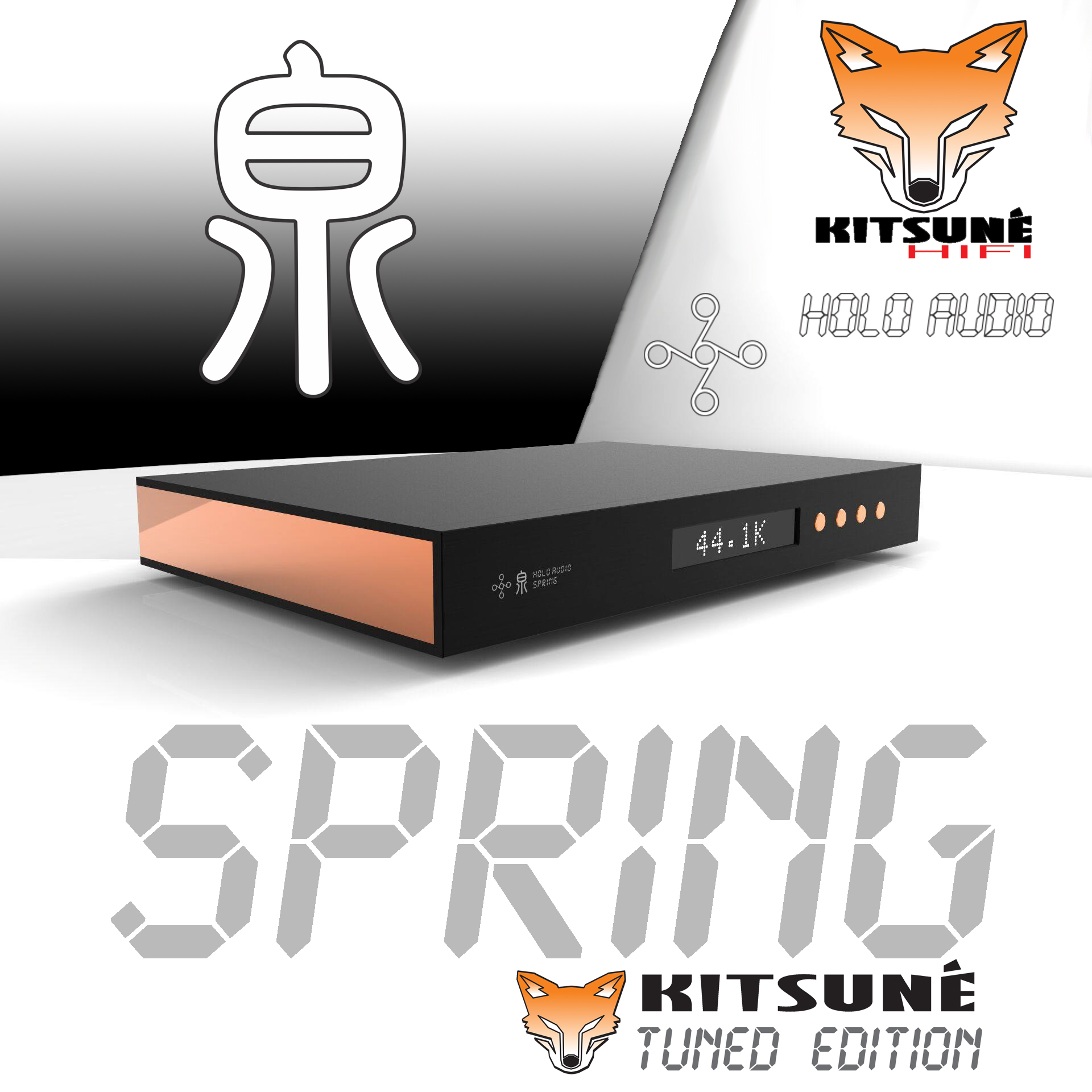
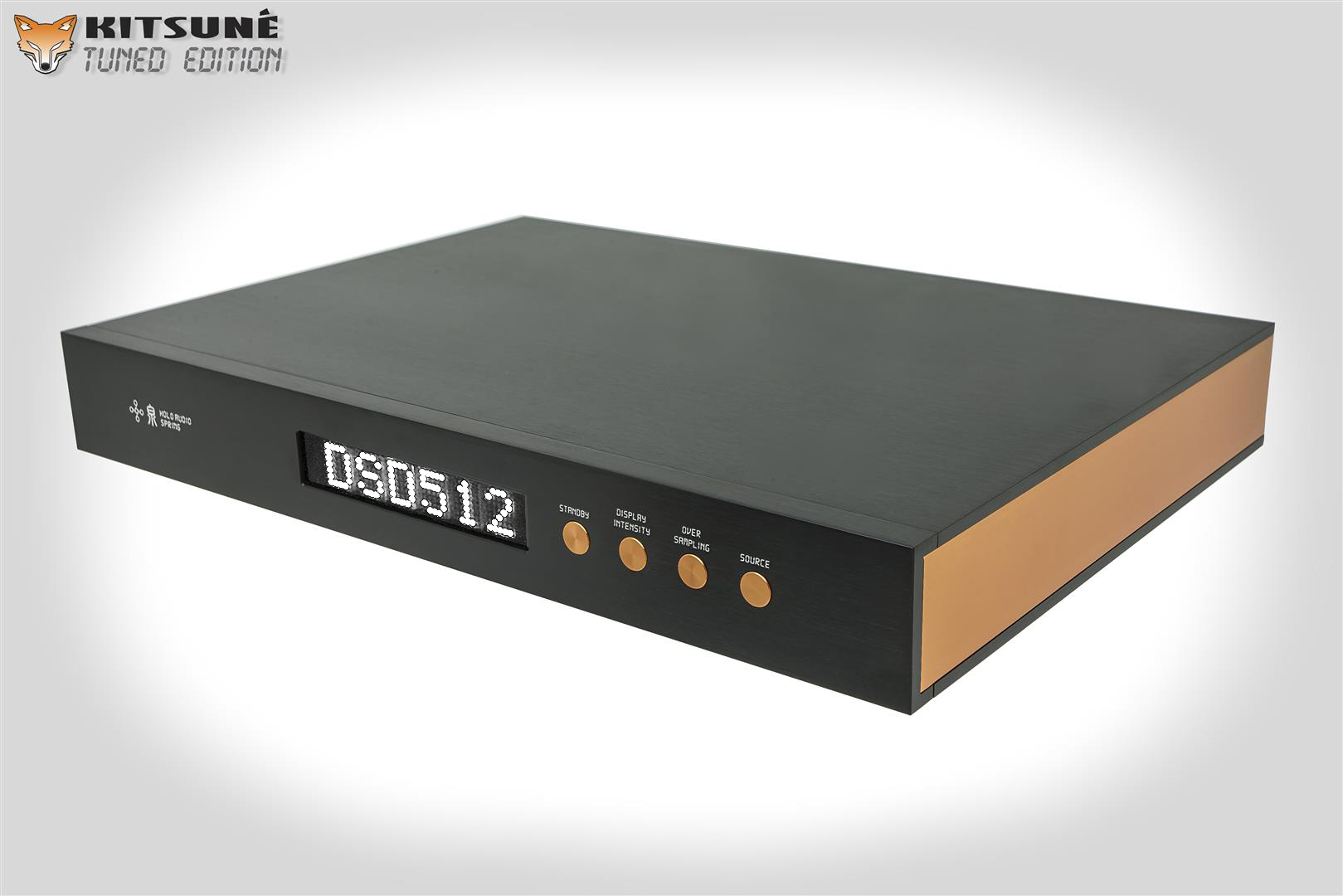
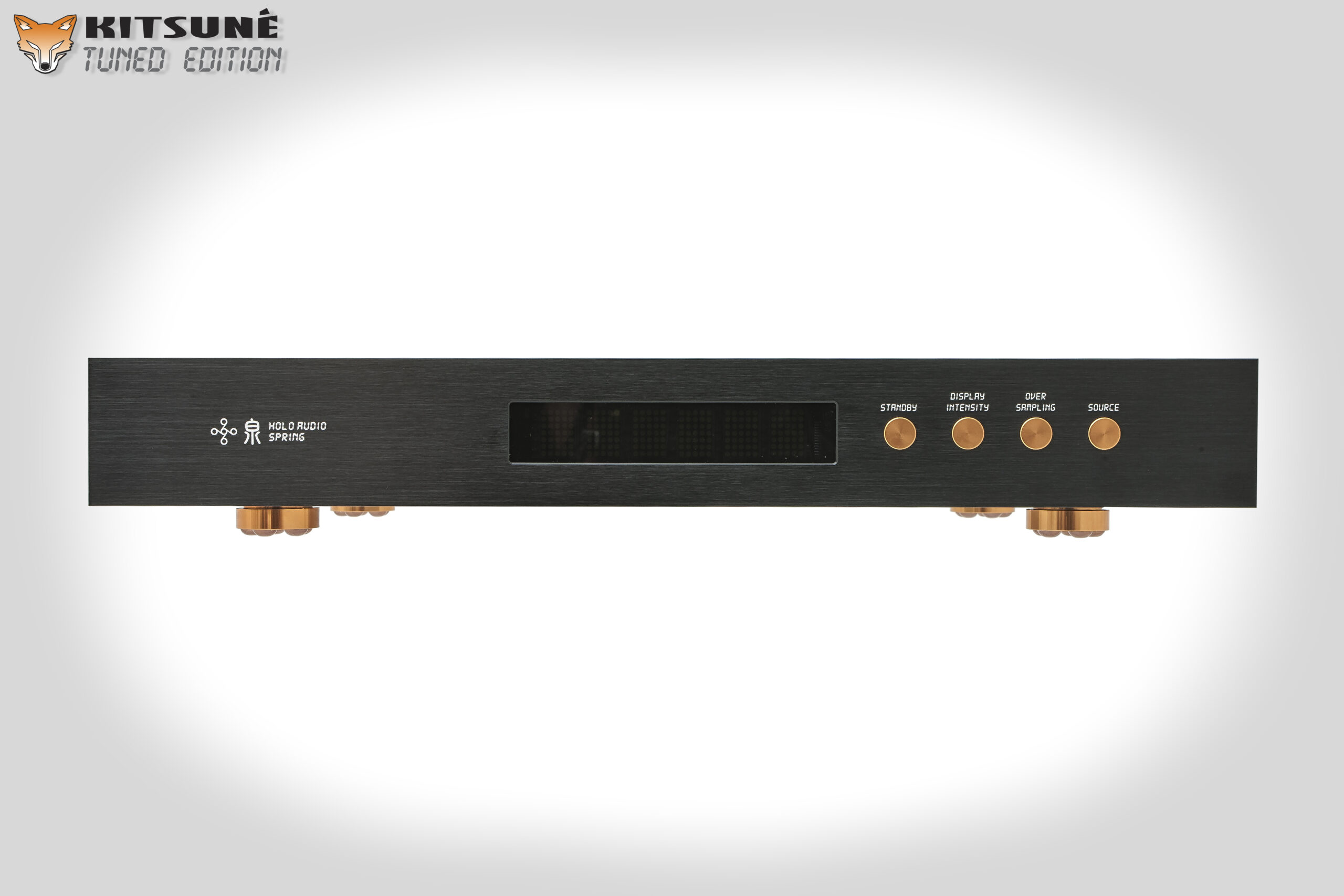
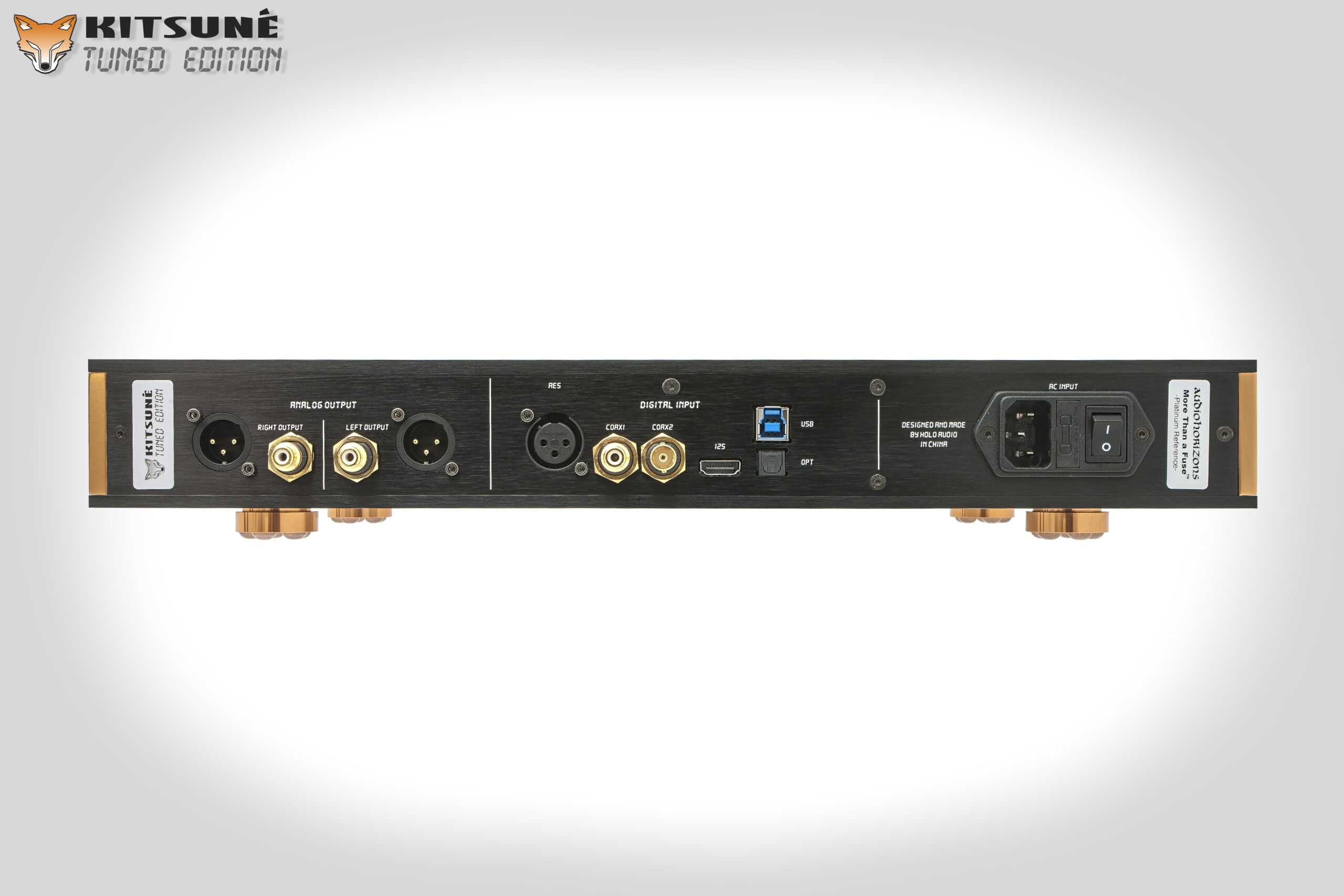
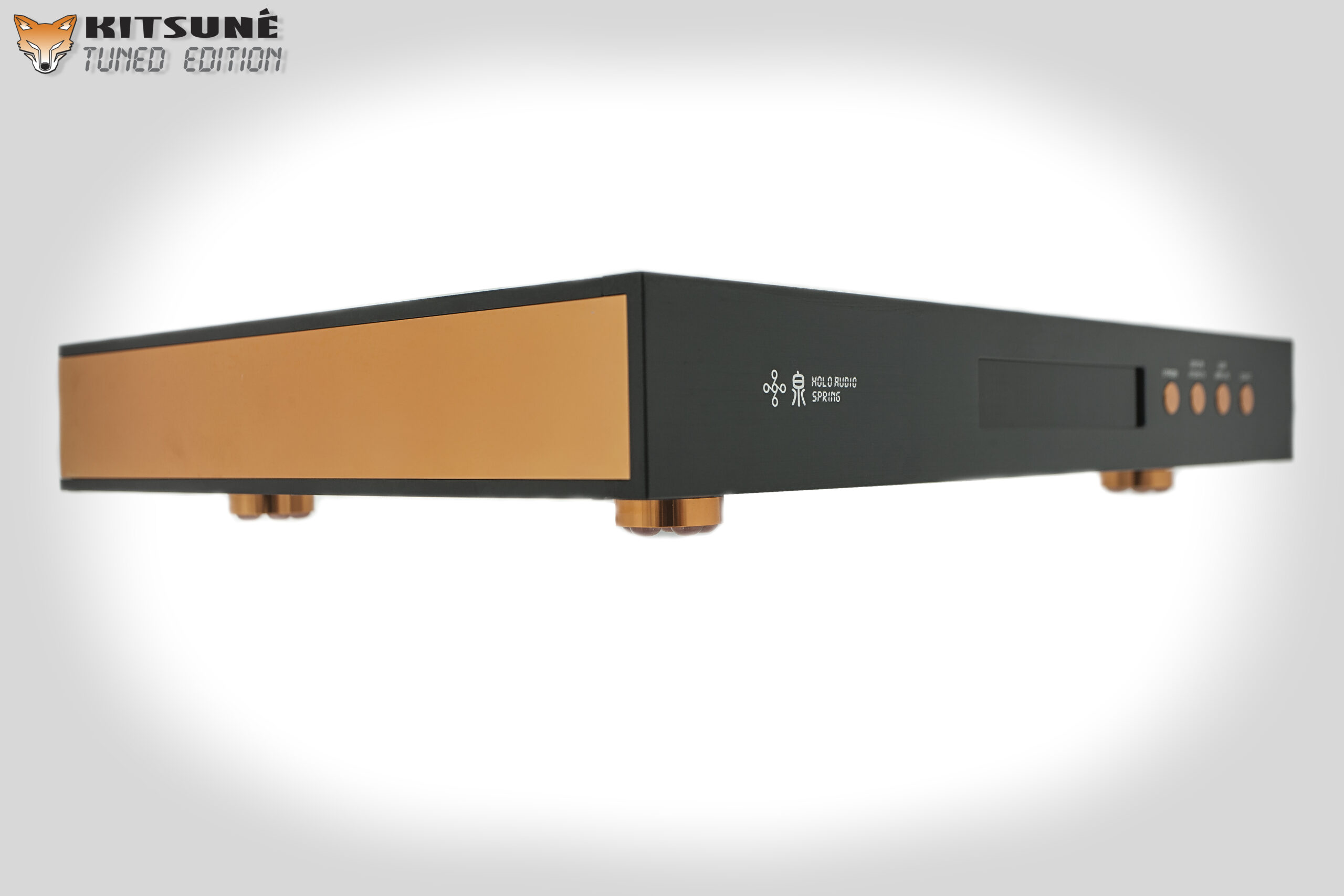
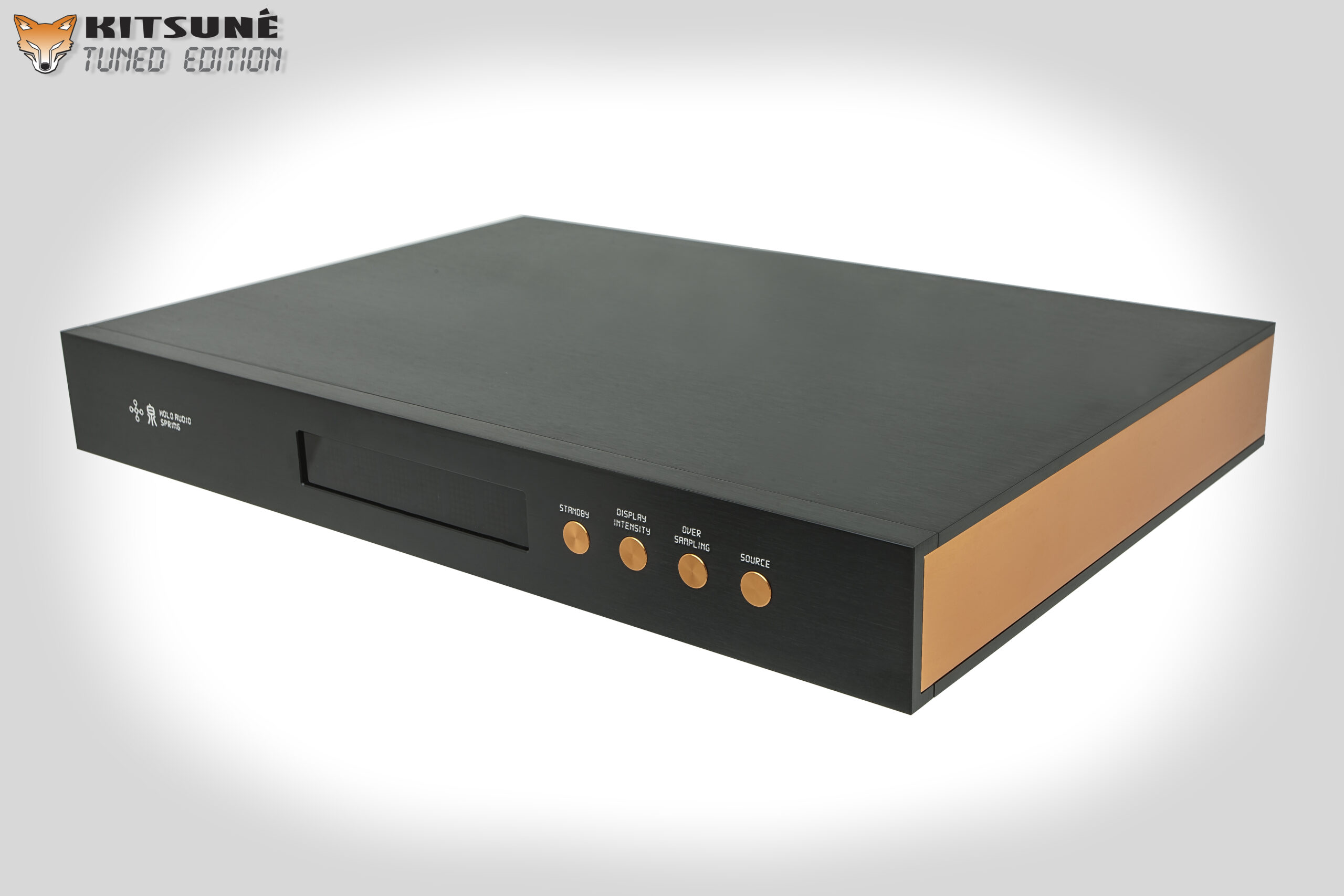
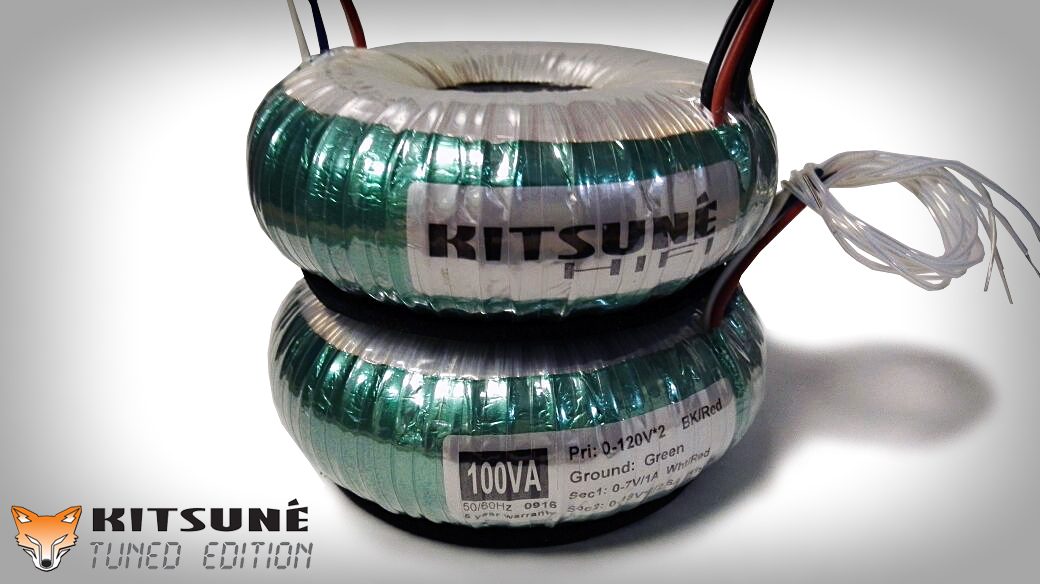
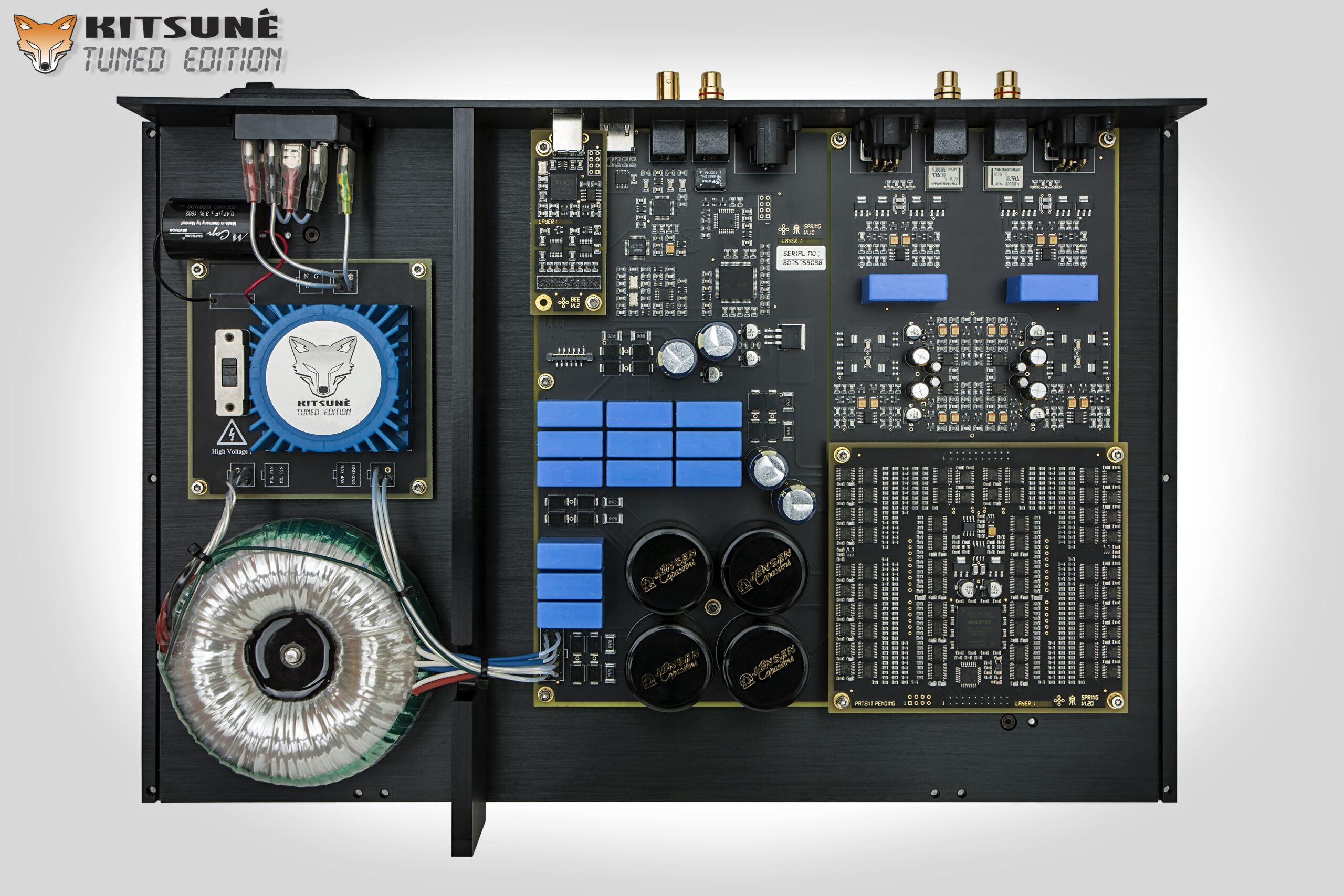
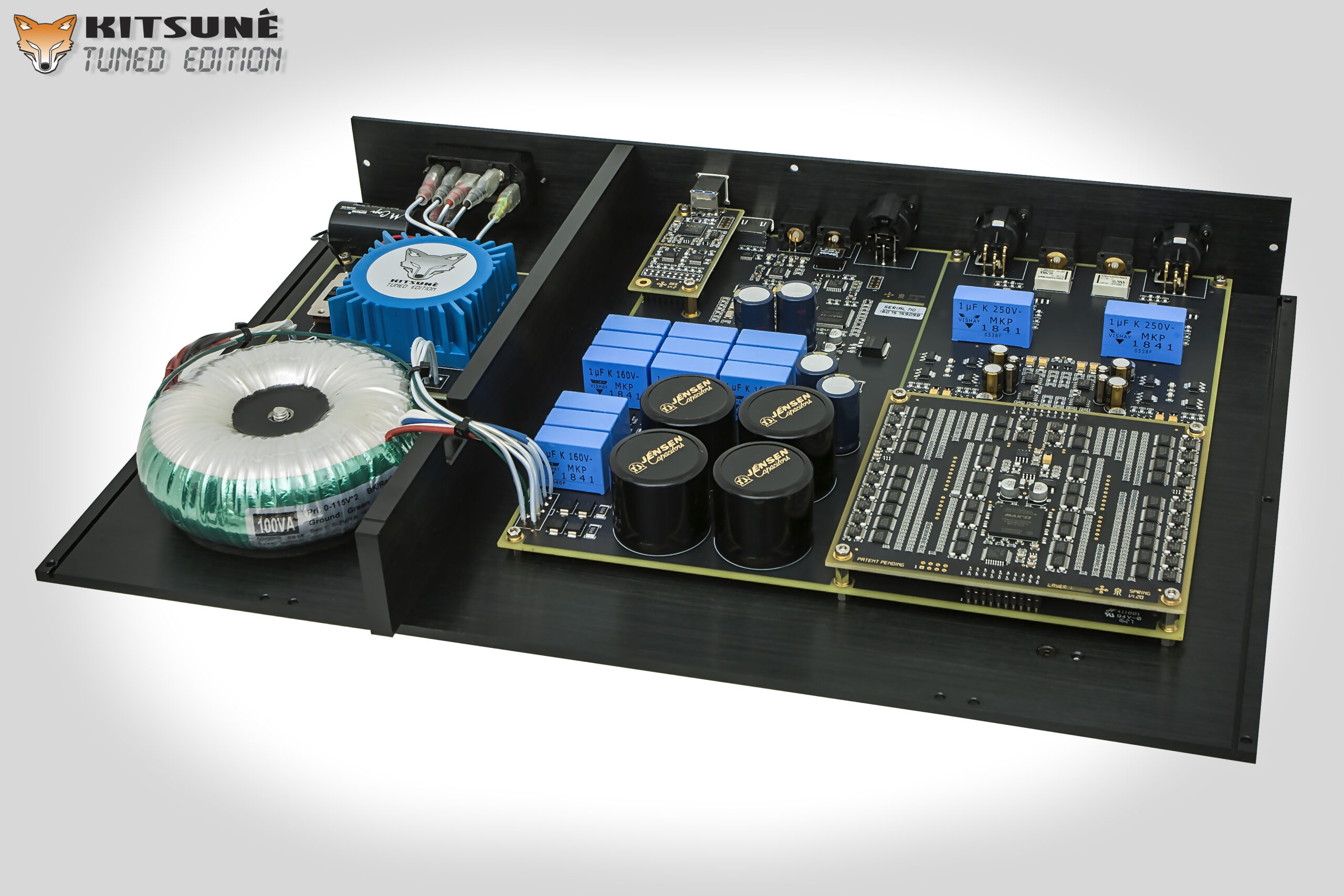


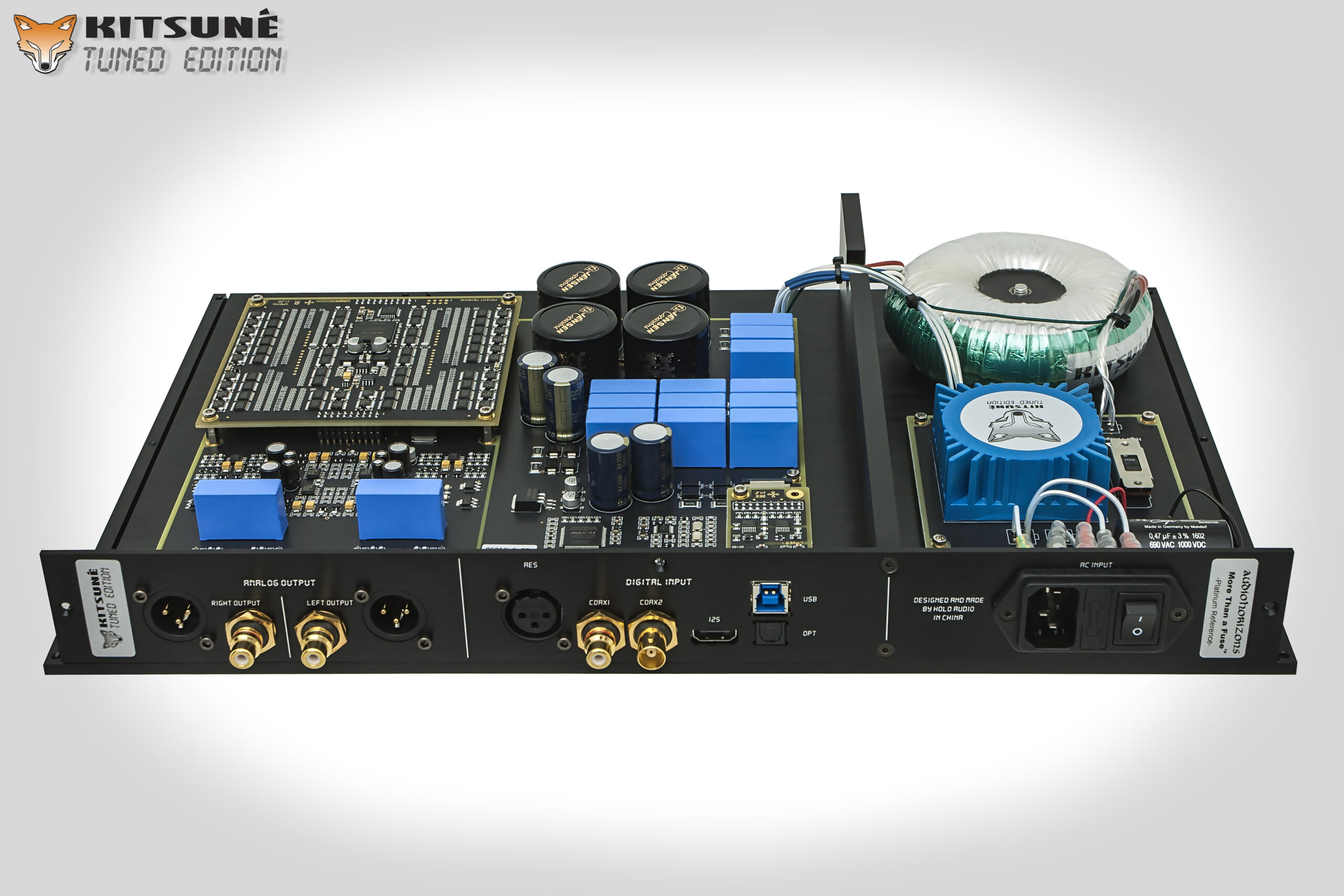

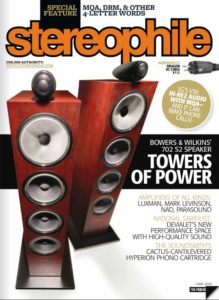
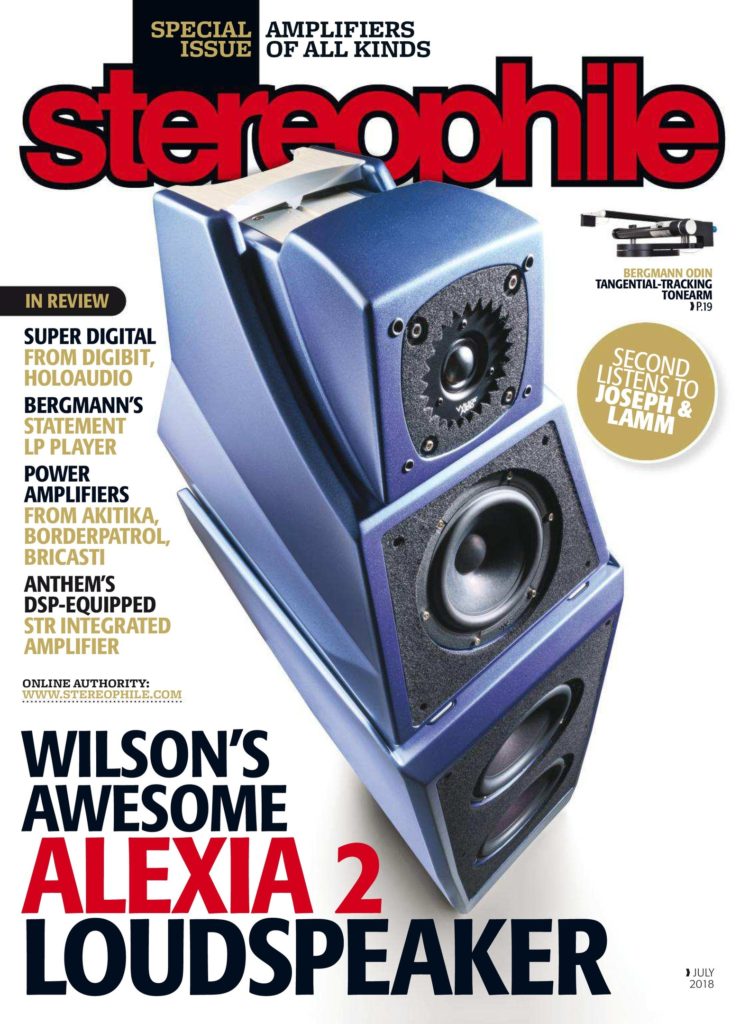
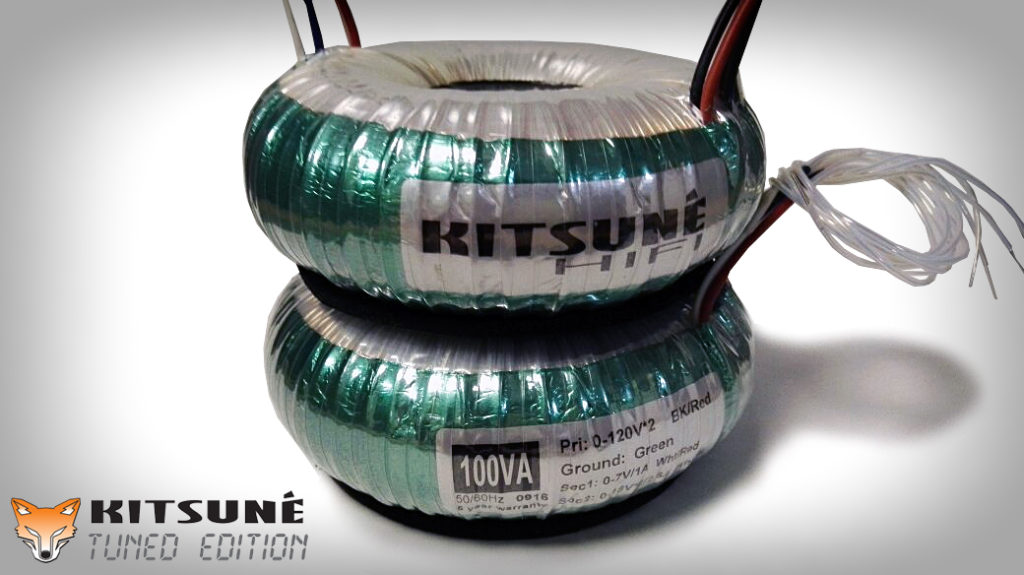
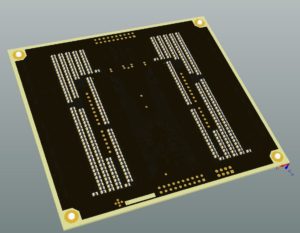
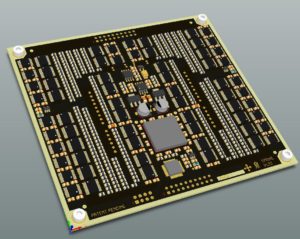


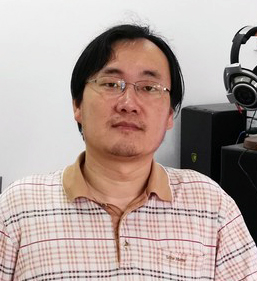
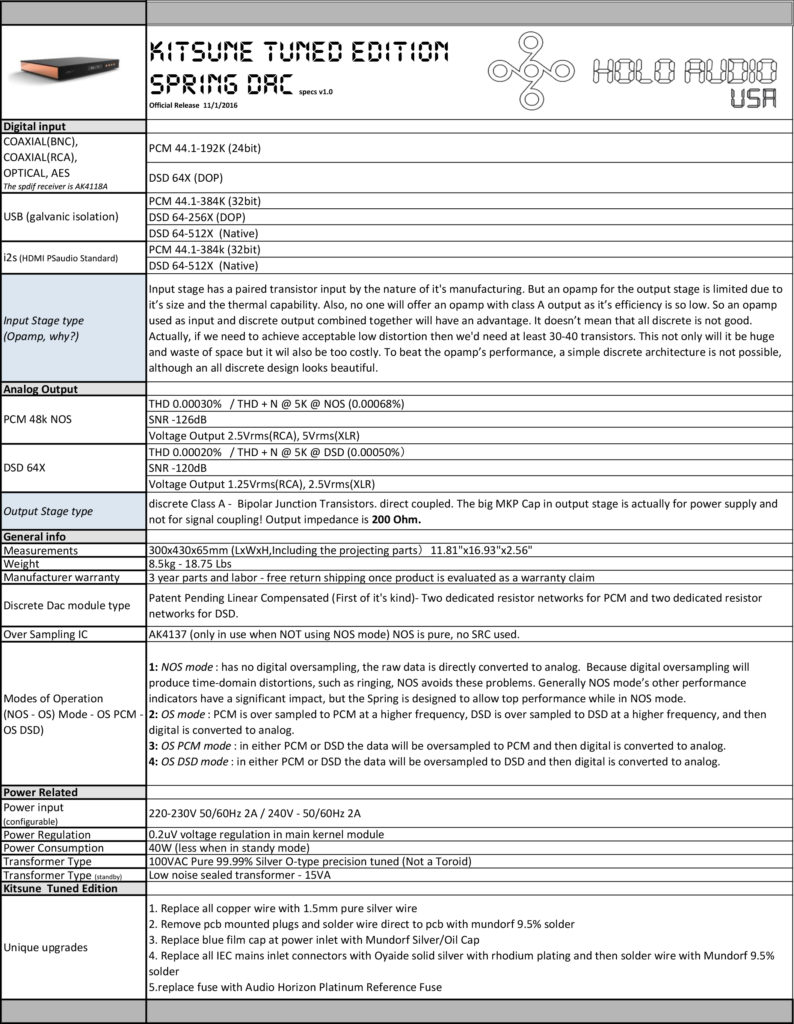
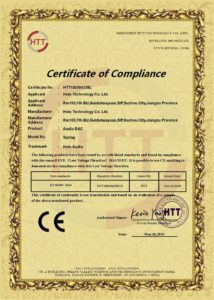
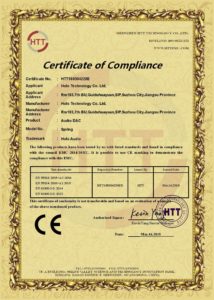
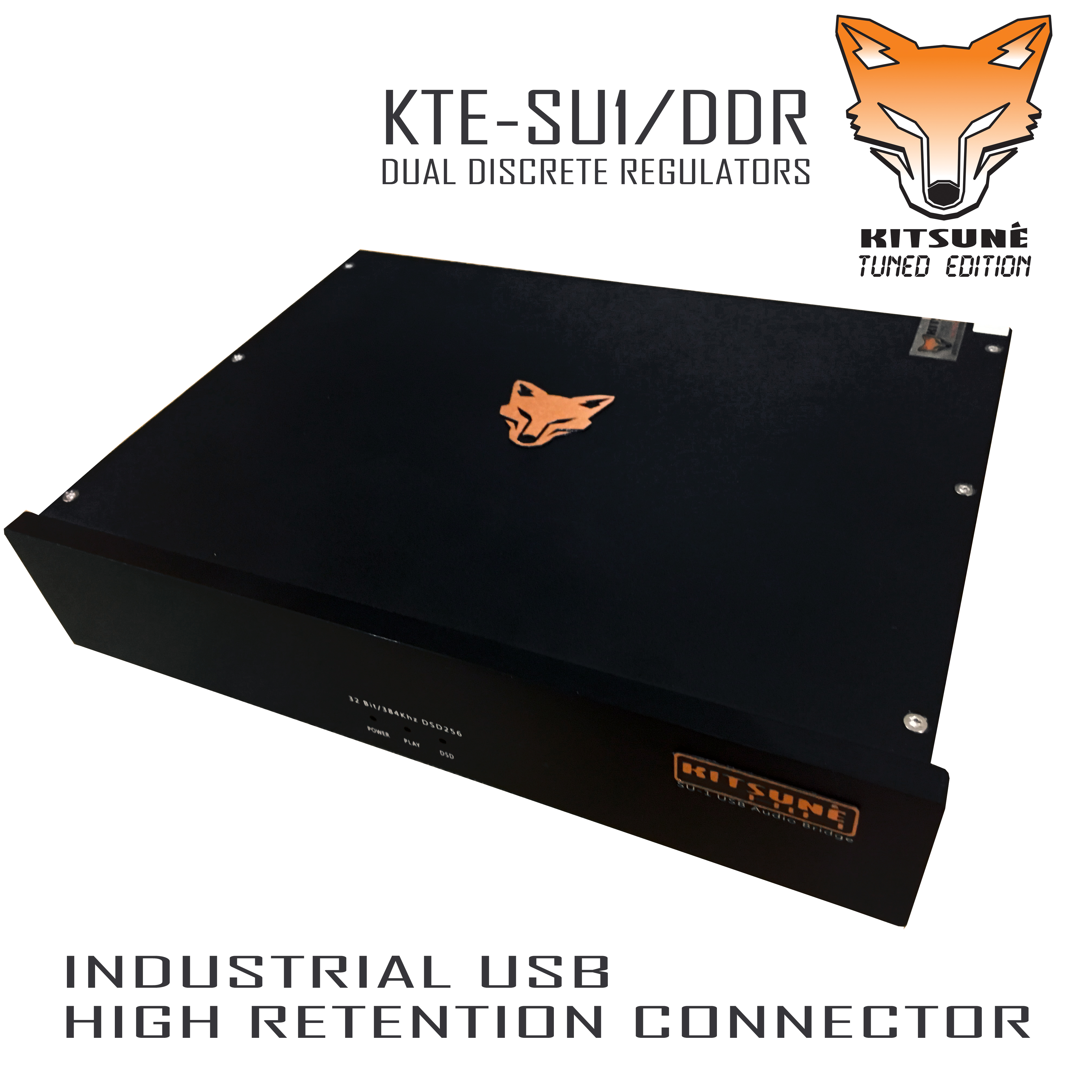
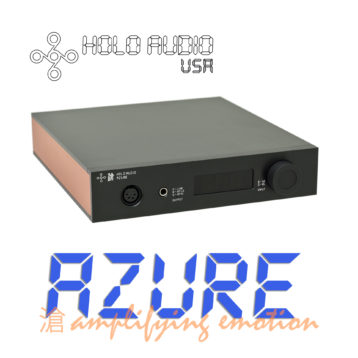
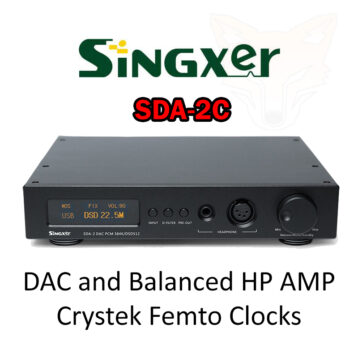
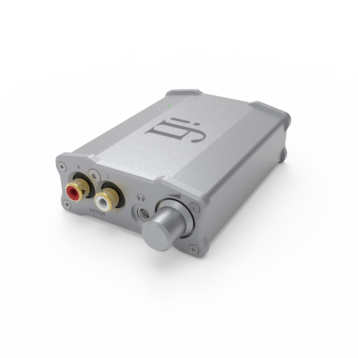
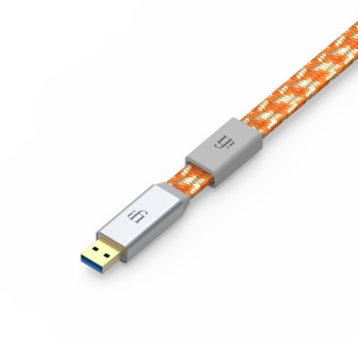
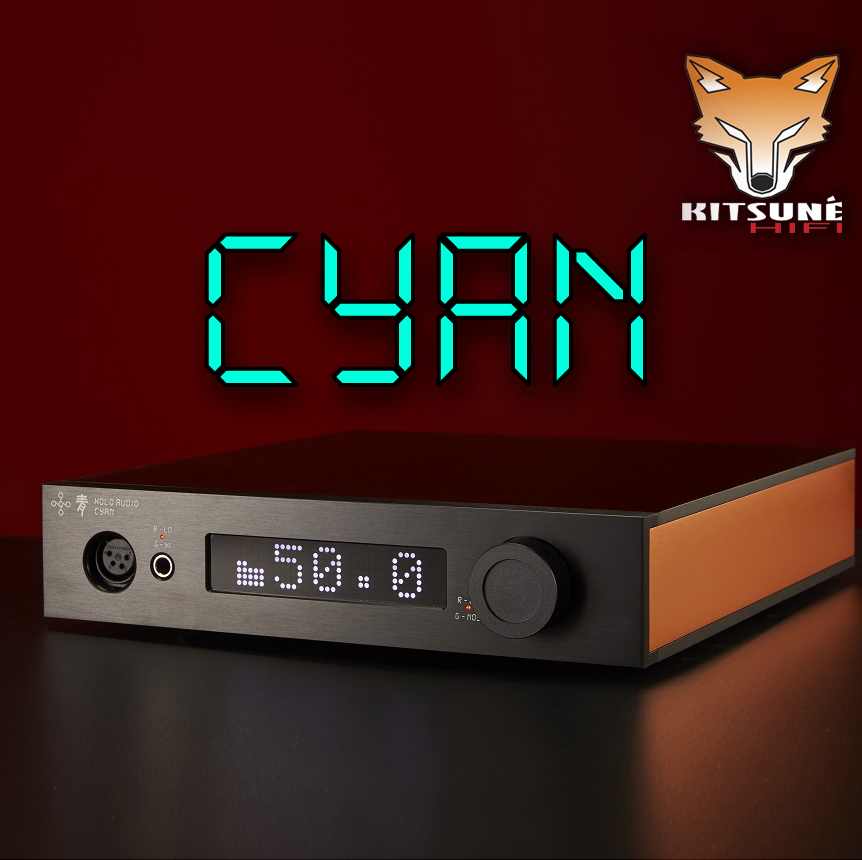
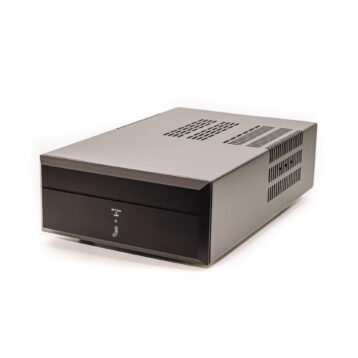
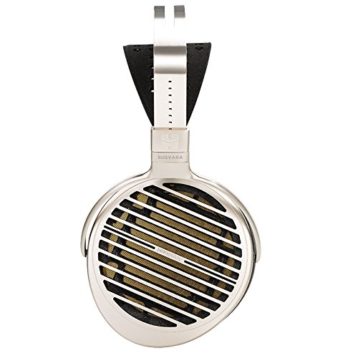
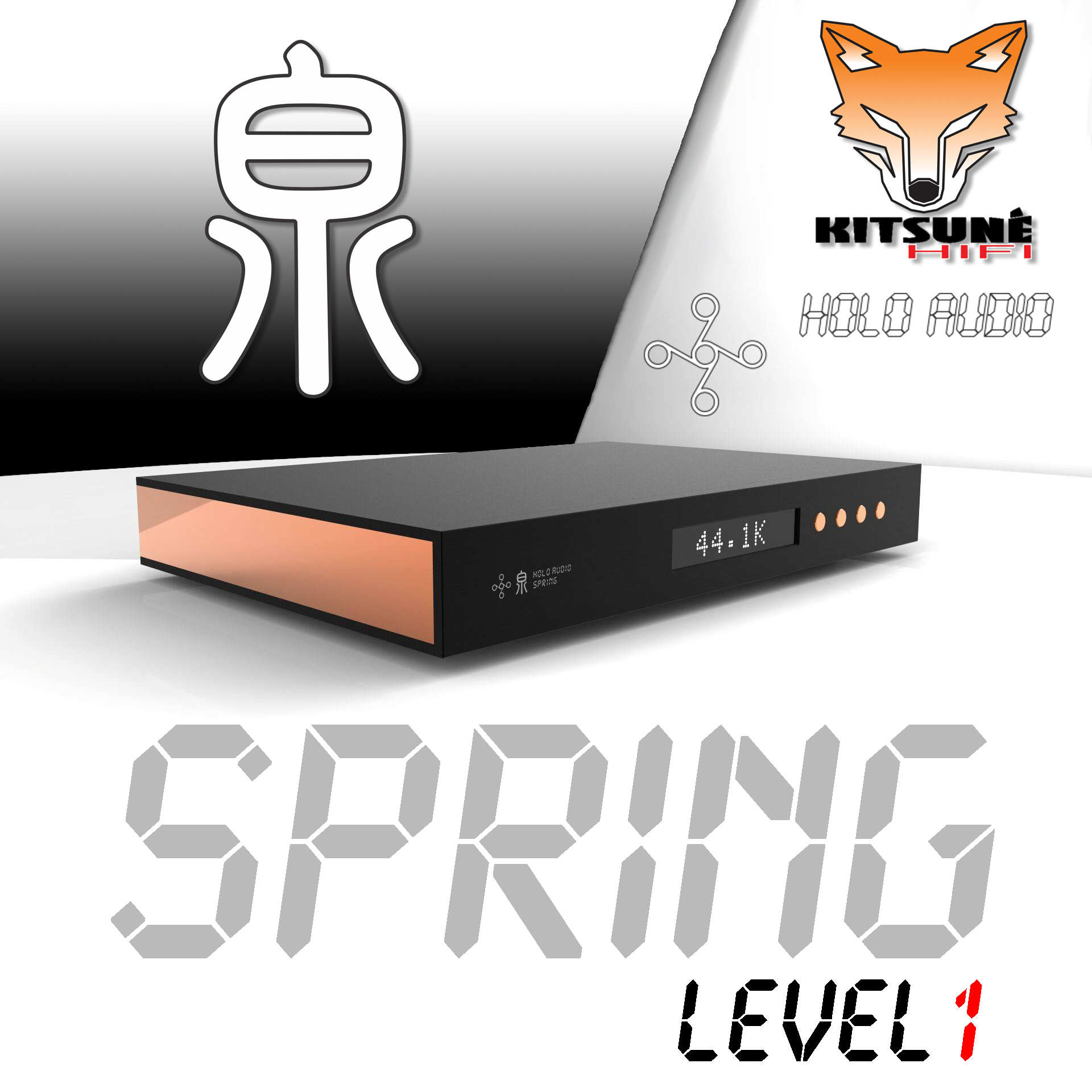
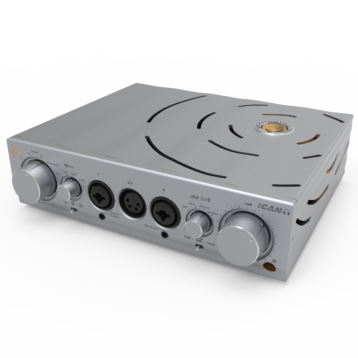
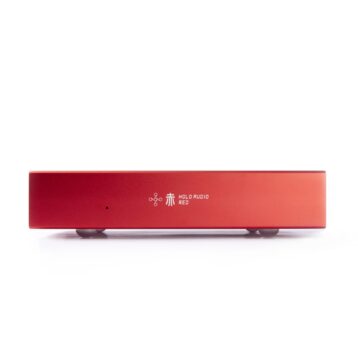

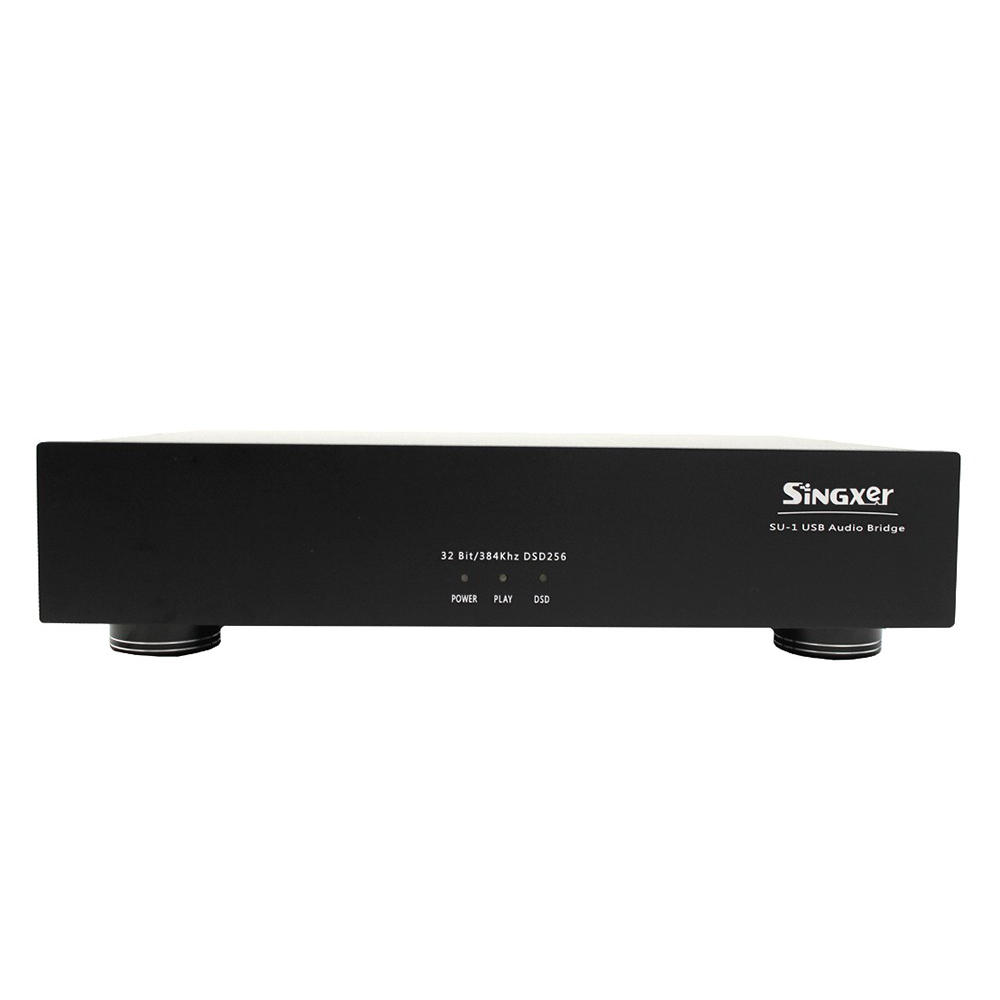
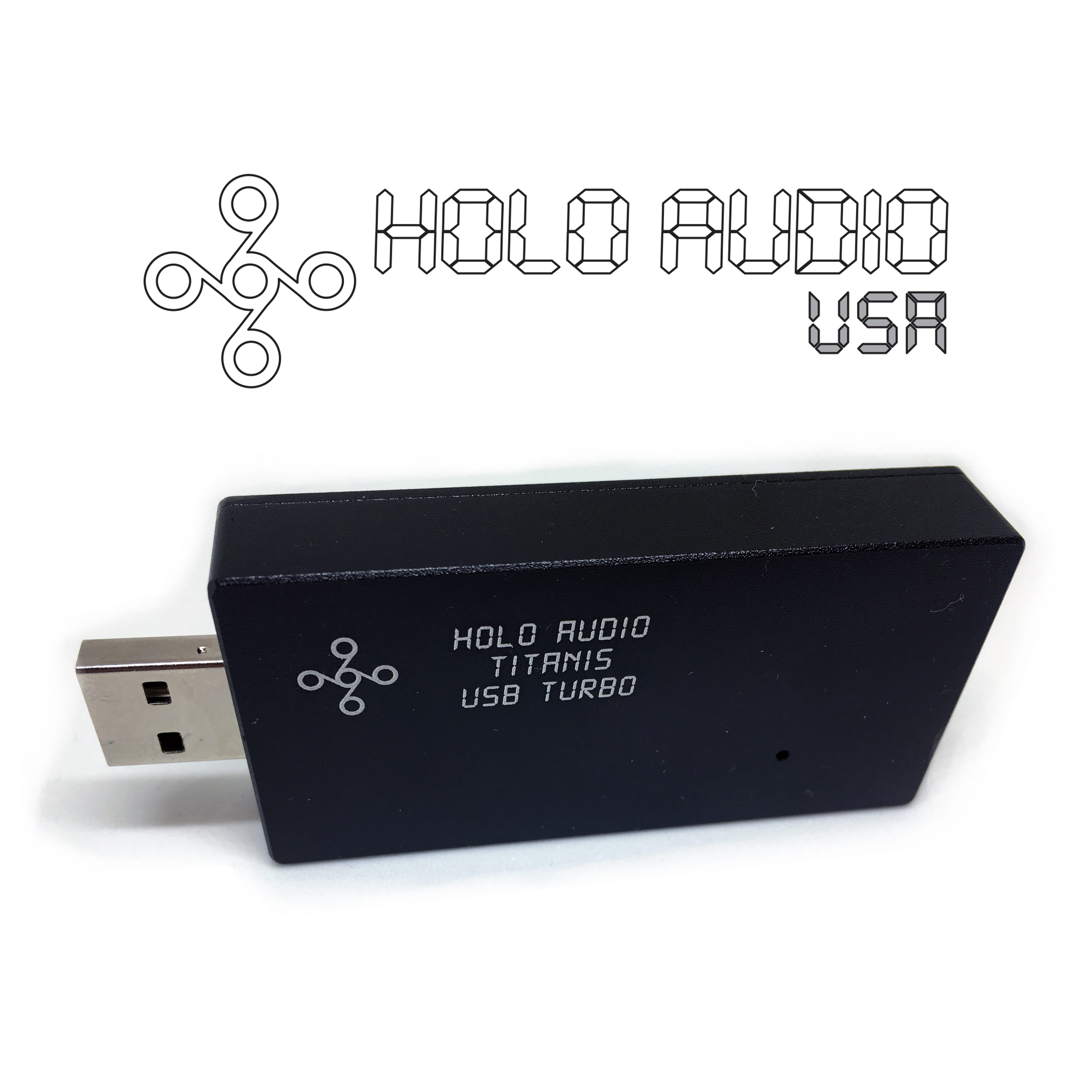
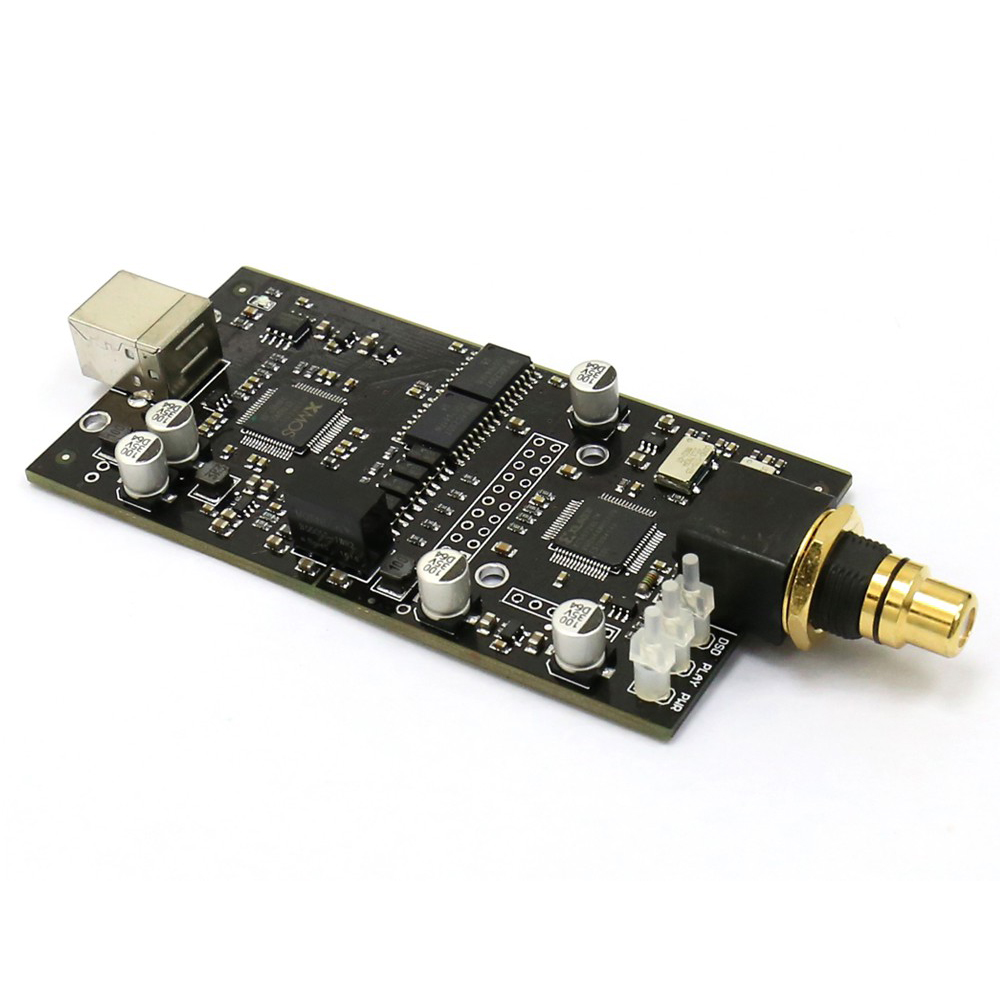
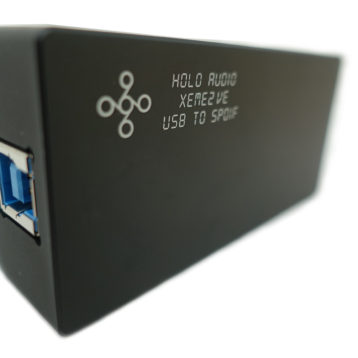
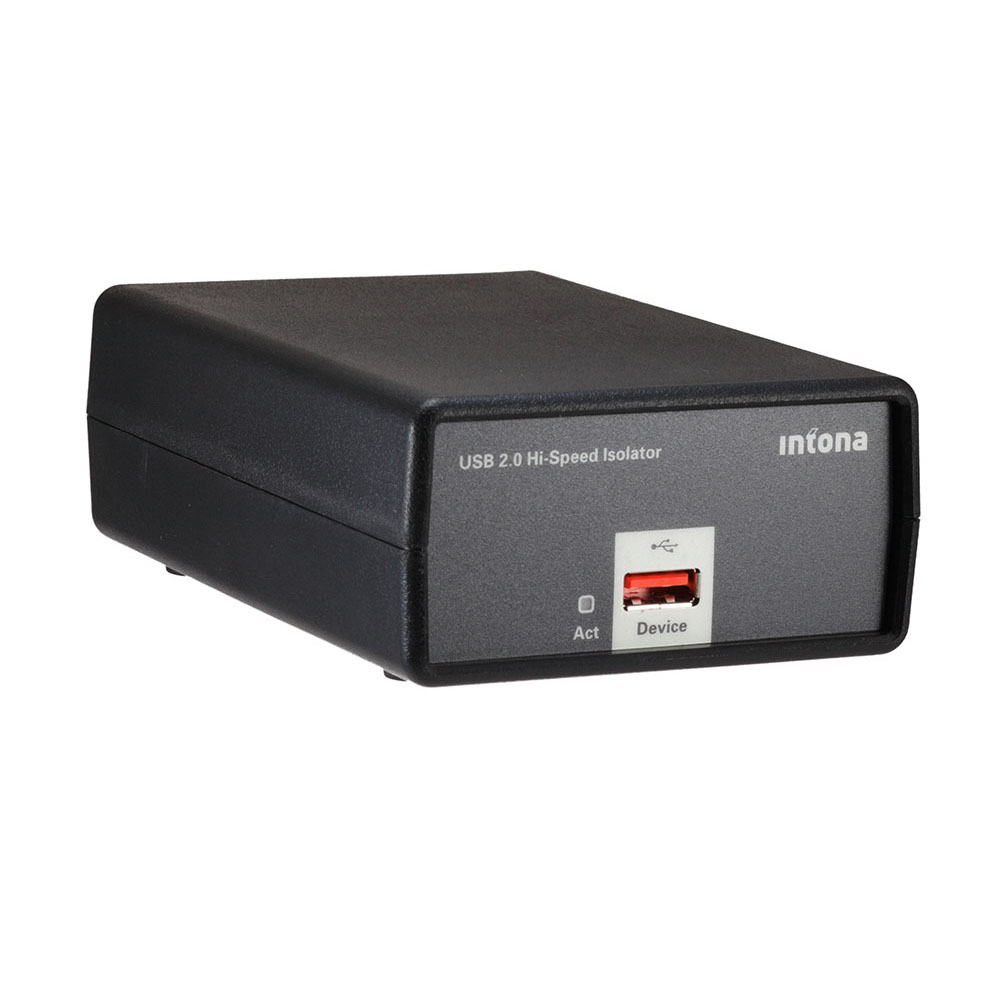
Greg –
I don’t want my enthusiasm to run away from me, especially before the 300hour break-in BUT…….. good lord.
I hope to pen a small review however in the interim:
I have been listening to both a Line Magnetic 502ca (sabre with valve output) with some significant (leclanche plasma guys) mods which I had been comparing to a certain well known and discussed TDA1541a and a basic AD1865 which I had intended using stacked AD844 output arrangements and a DIY AYAII in the making.
My initial reaction is there just seems to be such a relaxed flow of music and tone with more detail, more air and more there. Its like the highs have an inner illumination to them which I have only experienced with… DARE I say it vinyl, everything is there and you can hear into the highs (if this makes sense?) I am using it with a microRendu, High Fidelity CT-1 interconnects and a Slagle passive volume control, which is why on ordering it I was not sure if there would be enough weight and tone, well there is :). I have a heavily modified Tram with Special edition globe 45’s that I will try out but the Slagle’s just disappear.
Past speakers include full range electrostatics, Magnepan 3.7’s, Modified Acoustats, Linkwitz Orion’s and Azura 3 way Horn setup. My speakers currently are JBL everest horns with a 2″ B&C dcm50 paper compression driver (new take on an old RCA driver) on top of a 15″ RCF lenehan built bass box and a Fostex t500amk2 compression high frequency horn.
Tone and real music is what I am after in building the system that I have now, without compromising on detail. I want to hear the highs without feeling that they are being spat at me. I recently upgraded the only 2 resistors in the audio path in my Line Magnetic LM-503pa mono blocks (310a driving a Takatsuki 300b with Duelund cast coupling cap into a Pasvane 1:1 WE replica 845) to the Audio Note silver Tantalum combined with the Duelund cast coupling caps…….. as they were burning in, fingers on a chalk board would be a good description. The combination has now settled (thank goodness) and combined with the Holo Dac listening is utterly mesmerising. I just want to reach the full 300 hours to really see what this thing is made of let alone feed the HDMI with i2s from Ians FIFO…….
Each time I sit down I find myself shaking my head in disbelief. As I bought the DAC unseen and unheard, I had a huge pang of what if it does not deliver, well that is a distant thought and to say I am enthralled is an understatement. Oh, one last thing, this Dac is gorgeous in the flesh and the entire chassis is built out of brushed aluminium plate!
Tim’s service and responsiveness has been exemplary – thank you
Josef –
My dac arrived in pristine condition — very well sealed and foamed. The set up was easy and the most up-to-date drivers & firmware are always posted on the website.
Sound-wise this is the best dac I have ever heard bar none. It is incredibly accurate, dynamic and well-resolved. It was amazing hearing the capabilities of the dac, especially with native DSD 256. I am extremely happy with my purchase and will be following holo audio closely. Great product.
Ryan Shwayder –
Step 1) Get Holo Spring Kitsune Edition in for Review.
Step 2) WTF this soundstage is bonkers.
Step 3) Nah, I’m good with this Sonic Frontiers SFD-1 MKII SE+.
Step 4) Nope, Holo Spring is too good. Mine.
I intended to write a review of this DAC. My expectation was that it would be overhyped but reasonably good. I anticipated that I’d hear it, think it was pretty good but not worth the money, then send it along to the next reviewer.
Instead, I spent days trying to convince myself that I wasn’t hearing what I was hearing. Could a NOS dac be this resolving? Am I actually hearing the best of both worlds, and something even better than the many R-2R DACs, both non-oversampling and otherwise, that I’ve tried in the past?
I didn’t want to spend the money.
This DAC isn’t cheap.
But it’s a bargain.
I had order one before I was even done reviewing this unit.
Best DAC I’ve heard. I prefer it in NOS mode, but it’s outstanding in OS as well.
Kevin (verified owner) –
The Holo is exactly what I was looking for — a DAC with great resolution, wide sound stage, and excellent dynamics to pair with the Focal Utopia headphones. Tim’s customer service throughout the process was excellent. Highly recommended!
jcssc07 (verified owner) –
I’ve been the proud owner of a Holo Audio Spring DAC Level 3 “Kitsune Tuned Edition” for 3+ months now. All I can say is that I’m just blown away with the excellent sound quality this DAC delivers!
The Spring DAC has truly taken my listening experience/enjoyment with my system to an entirely new level in every way imaginable. If you’re considering or in the market for a new DAC I would highly recommend adding the Spring DAC to your chain without hesitation!
Sincerely,
Joseph
Joe (verified owner) –
I have had this dac about six weeks now. I have the Level 3 and could not be happier.
This is the best upgrade that I have ever heard in my chain. 44/16 flac sounds sublime and the DSD is completely off the hook.
Thanks for everything Tim. If anybody is on the bubble about this dac, just get it and try it for yourself, so glad I did.
James Staff (verified owner) –
I own a very highly regarded (and highly reviewed) DAC which is in the same price range as the Spring Level 3. When I first tried it, I owned a $12K DAC and the new one easily eclipsed it. I loved it. I subsrquently took the level 3 on trial with a loaner from Tim, and I have now ordered one which I thought would never happen unless I went up significantly in cost. Although I loved my Dac and still think it is a great unit, The Spring gave me such a closer, more emotional connection to the music without giving up anything in terms of resolution or any of the other audiophile parameters (indeed surpassing it in one or two) but seemed more alive, with the music being that much more tactile and palpable than any I have ever had in my home (and I’ve had quite a few, this being my 54th year as an audiophile). Now that I have sent the loaner back to Tim, the music sounds drier, more clinical and so much less involving than it did with the Spring, that I can’t wait to get my new one and reconnect with the music. Thank you Tim for the great customer service and the simply fabulous product which I never thought would happen at this price point.
Jimmy Staff
K Brooke –
Firstly, in the world of high priced audio, I am a mere mortal. I was lucky enough to get a used Holo Spring Level 3 for a good price. Until now, I’ve used many well known and well regarded low to mid tier DACs. They all delivered in some ways and were weak in others. It seemed that if I wanted good body & tone then I had to settle for poor dynamics, if I wanted clarity and transparency then it would also sound a little thin and dry. Most importantly, I always felt removed from the music itself, like it was a presentation rather than an involving experience. The Holo Spring Level 3 has completely changed my idea of what a DAC can deliver. In NOS mode, music flows with an organic quality not unlike a live performance. The soundstage is holographic with every instrument given it’s rightful place. The Holo Spring seems to create a realistic sense of space where drums are slightly further back from vocals and each instrument sounds like it’s where it should be. There is warmth and body to the tone without sacrificing any detail or dynamics. The Holo Spring Level 3 delivers a pure, honest sound that allows you to feel the music, something that has been missing in my audiophile journey. The OS modes are good enough, they seem to tighten up the soundstage a little, but the real magic is in the NOS mode. The only minor quibbles I have are a lack of remote in this version of the DAC and the fact it can heat up a little, even when in standby mode. This is not something I’ve experienced with a DAC before but may just be part & parcel of having a good internal power supply. I highly recommend the Holo Spring Level 3.